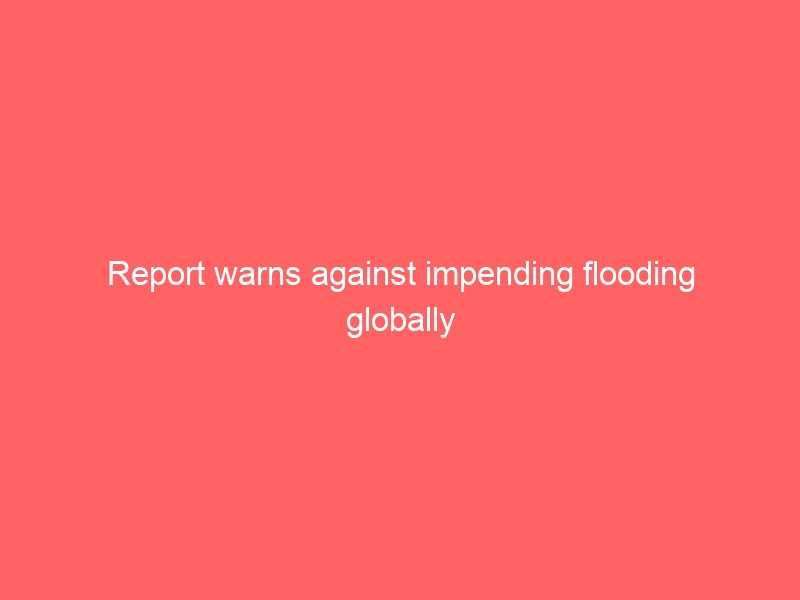A report by Potsdam Institute for Climate Impact Research (PIK), Germany, has alerted that rainfall changes caused by global warming will increase river flood risks across the globe including Africa.
According to the report, fluvial floods are among the most common and devastating natural disasters. Scientistsí say there is the need for increase in flood protection until the year 2040s worldwide, breaking it down to single regions and cities.
The findings stressed that the need for adaptation is greatest in the US, Africa, and parts of India and Indonesia, and in Central Europe including Germany.
Inaction would expose many millions of people to severe flooding. More than half of the United States must at least double their protection level within the next two decades if they want to avoid a dramatic increase in river flood risks, it states.
The lead-author, Sven Willner said without additional adaptation measures such as; enhancing dykes, improved river management, increasing building standards, or relocating settlements ñ the number of people affected by the worst 10 percent of all river flooding events will increase in many places.
In Northern America from 0.1 to 1 million ñ while this seems not like a large number, it is a tenfold increase. In Germany it could rise sevenfold, from 0.1 to 0.7 million. Absolute values are even bigger elsewhere: in South America the number of people affected by flooding risks will likely increase from 6 to 12 million, in Africa from 25 to 34 million, and in Asia from 70 to 156 million.
The real numbers might be even higher in the future as population growth and further urbanisation is not taken into account. Even in developed countries with good infrastructure the need for adaptation is bigî, he said.
The study is based on comprehensive computer simulations using existing data on rivers from a great number of sources. While this data is not perfect for each and every river in the remotest corners of our planet, it certainly is sufficient for places where a lot of people live, a lot of financial values are accumulated, and where flood risks are substantial ñ we know enough about the places that matterî, Willner explains.
The data on changes in rainfall evaporation and the like were from the worldwide largest modelling inter-comparison project of climate impacts (ISIMIP), coordinated by Katja Frieler at PIK.
The spatial detail of the new study is roughly ten times more precise than in commonly used climate computer simulations.
The co-author of the study Anders Levermann said; ìWe have been surprised to find that even in developed countries with good infrastructure the need for adaptation is bigî.
The findings should be a warning to decision-makers. ìIf they choose to ignore the issue, sadly enough disaster will come.
The time has come where mitigating future climate change must be accompanied by adapting to the climate change that we already caused. Doing nothing will be dangerousî, he stated.












